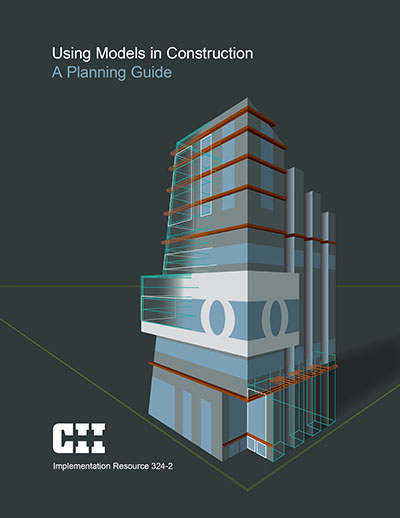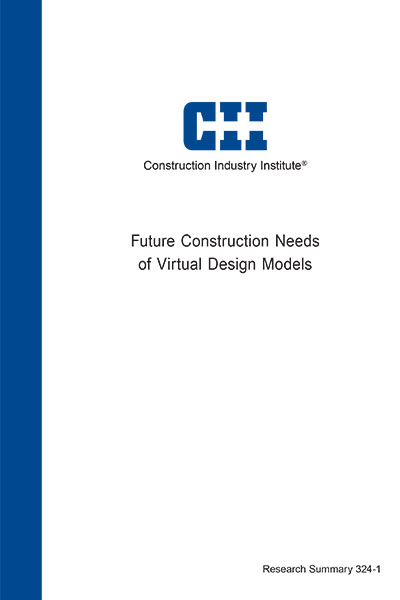
Future Construction Needs of Virtual Design Models
Digital models provide value throughout the life cycle of a facility, and are becoming widely used throughout all sectors of the construction industry. While emerging technologies facilitate the development of design models, the purposes and processes for implementing digital models have been less focused on the construction of facilities.
There is an opportunity to better leverage model use to support construction. Based on the current state, Research Team 324 (RT-324) focused on the research goal:
To identify the breadth of construction needs for using virtual information models throughout the project lifecycle, and to develop an approach to improve information accessibility to support construction.
Three phases of research were undertaken to achieve the research goal. The first stage of this research was to develop a taxonomy of construction model uses. By leveraging previous efforts in literature, combined with focus group discussions, RT-324 defined the array of construction model uses. 30 construction model uses were identified and six model progressions were developed to define the relationships among them. To validate the model uses and their value in construction, as well as to understand the key elements, five case studies were undertaken. The detailed implementation of model uses in construction were documented and analyzed across commercial construction, civil infrastructure, and industrial projects. Finally, a broad industry survey was conducted to investigate the current adoption status, perceived value and relative difficulty to implement the defined model uses. The results indicate that the most valuable yet not widely adopted model uses are: analyze constructability, direct layout of elements, generate modularization and prefabrication plan, analyze construction sequence, fabricate elements, and communicate construction schedule. The three research phases worked together to help demonstrate the current and future model uses in the Construction Industry, and served as a foundation to develop a planning procedure and list of model uses to advance industry adoption.
The results of this research include the taxonomy of construction model uses, the detailed information for implementing the model uses, as well as the benchmark of current model use in the construction industry. These results, as well as the research processes, contribute to defining the processes and information exchange for implementing digital models. Construction companies and owner organizations can use the findings of the case studies and the survey to evaluate their status in terms of model use adoption against the industry benchmark and determine the next model uses to offer value to their projects.
The research focused on the common practices and industry averages in model use implementation. Project and sector variations, such as delivery methods and owner involvement, were not focused upon in this research but likely have a significant effect on the value and adoption status of the various model uses. Future study could be extended to identifying the high value model uses for other stages of the facility lifecycle, such as the Operation Stage. The synergies between the identified valuable, near-future model uses and CII’s best practices, such as Advanced Work Packaging, could also be a future study direction to provide value to the construction process.



